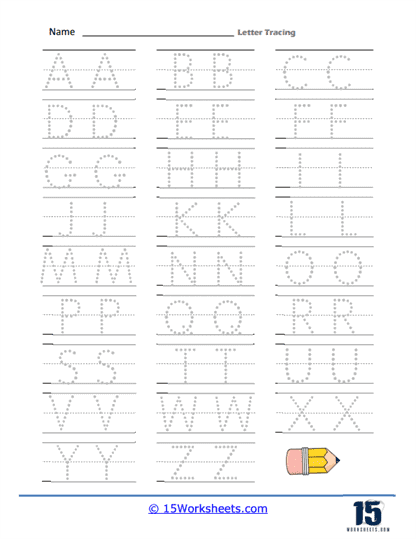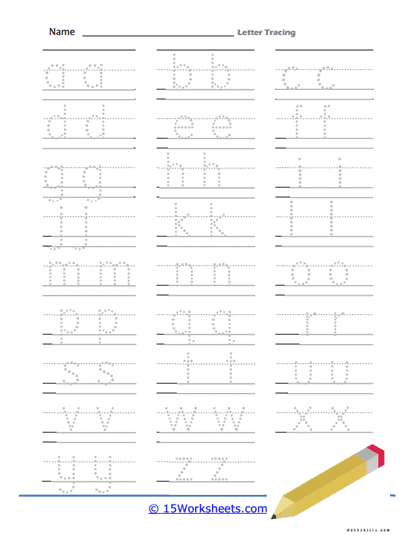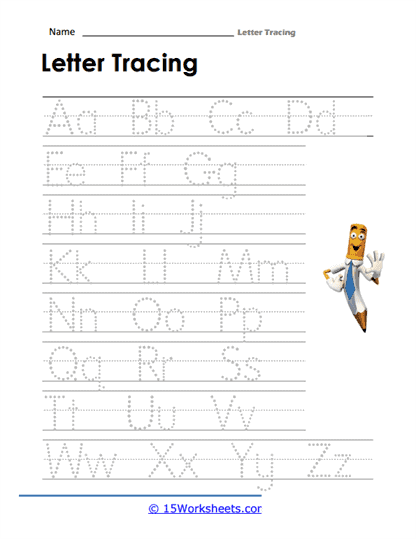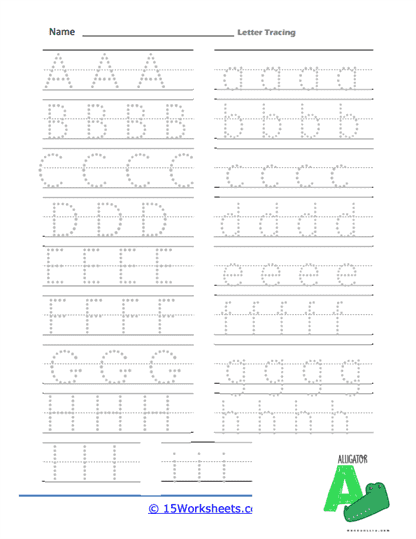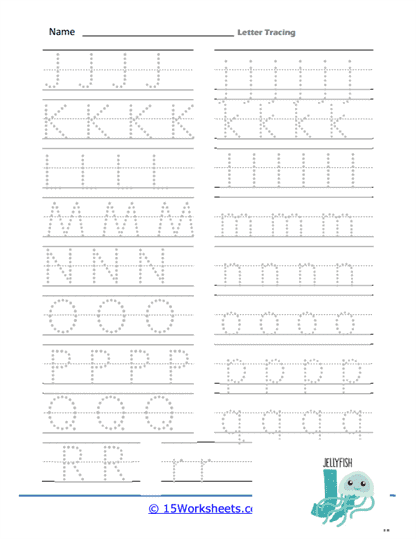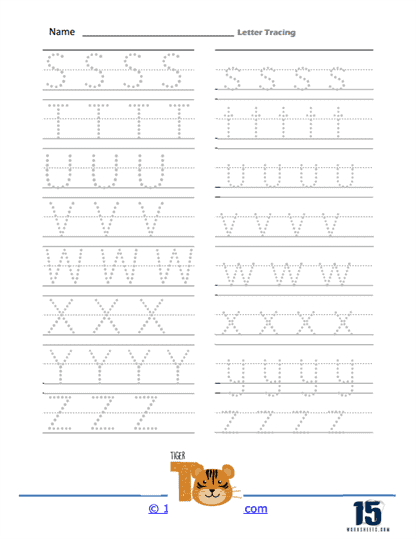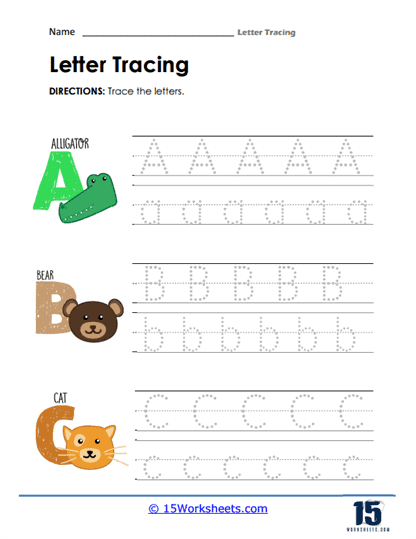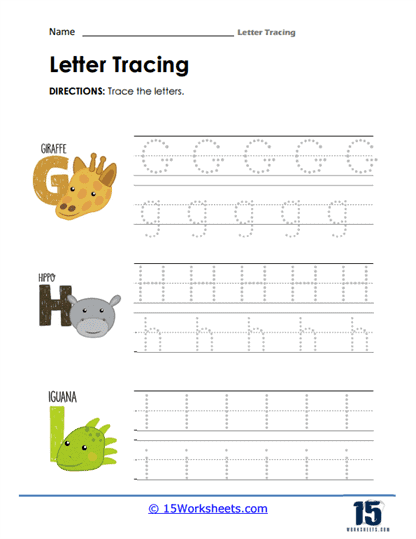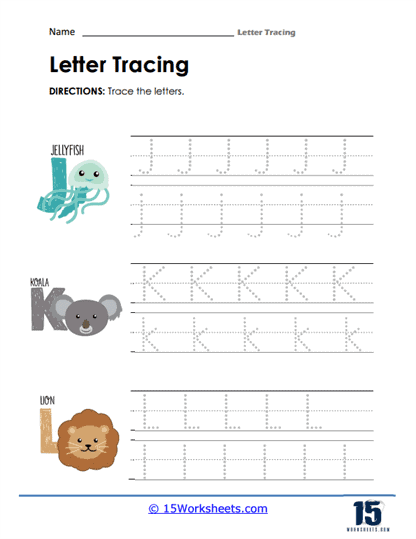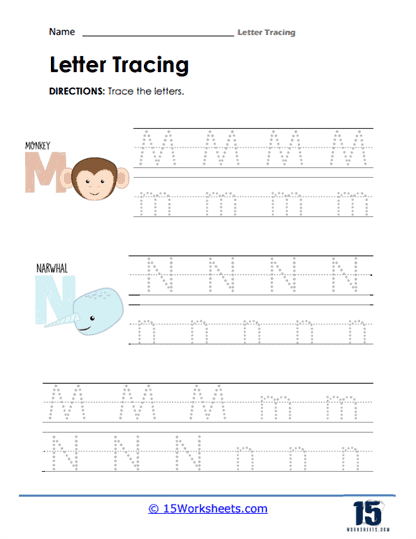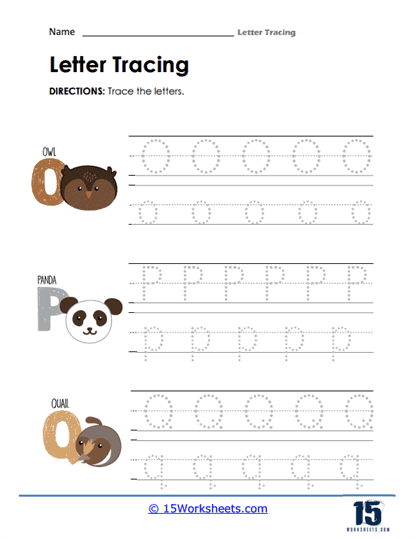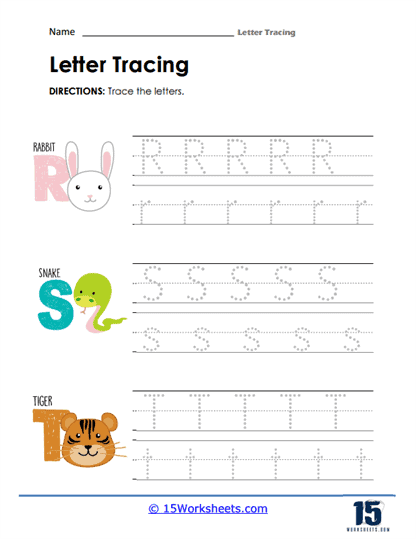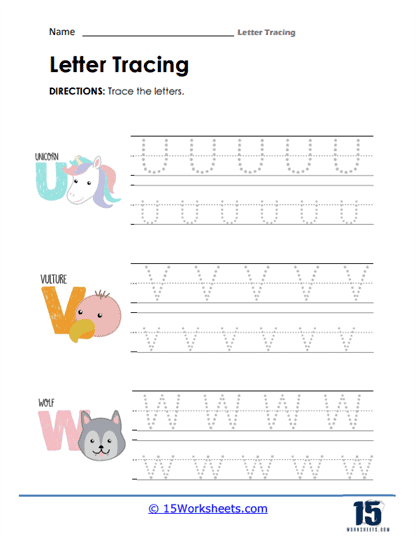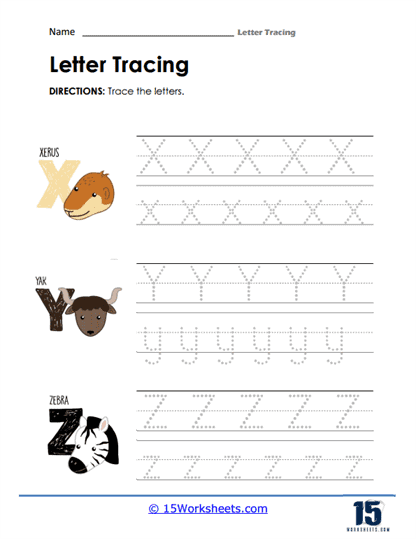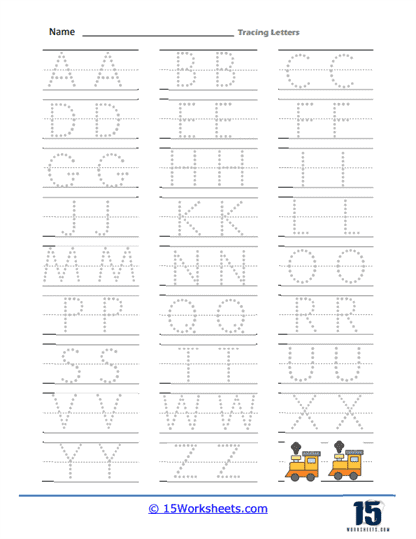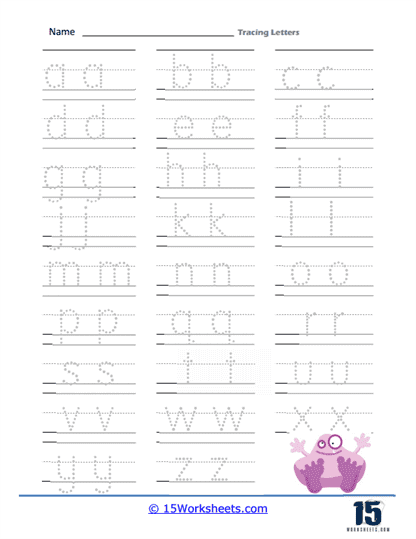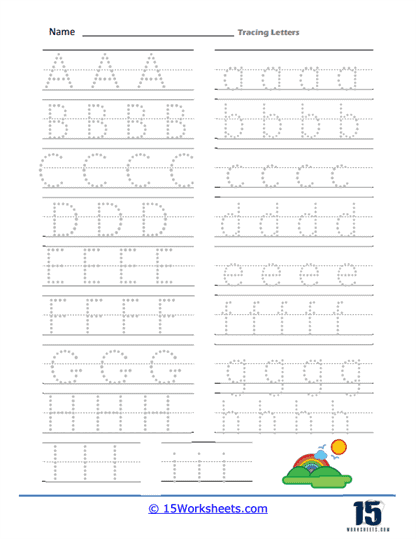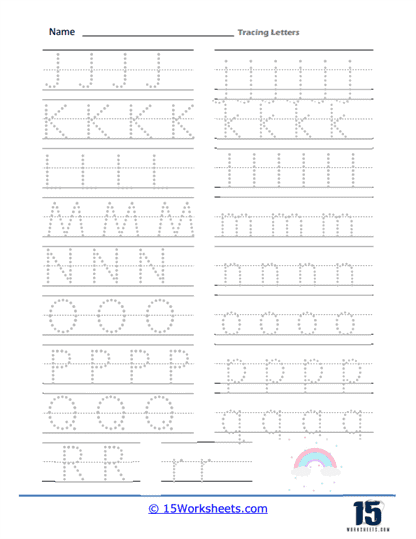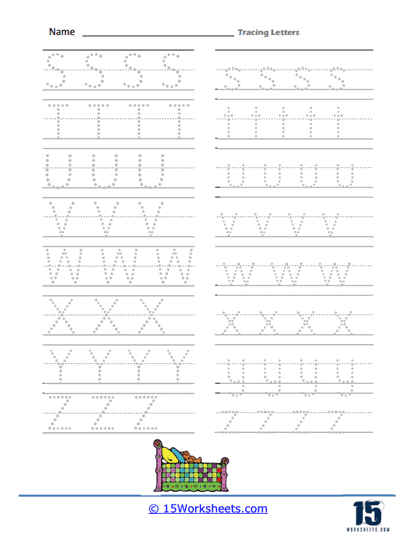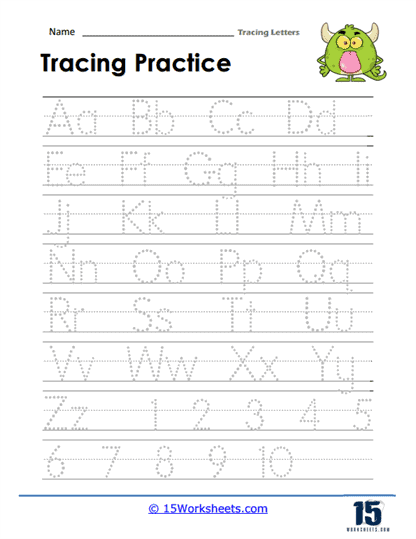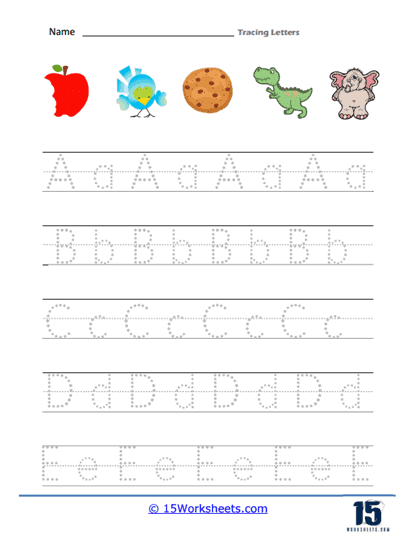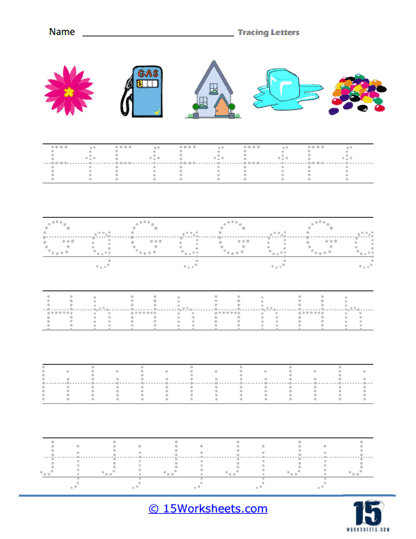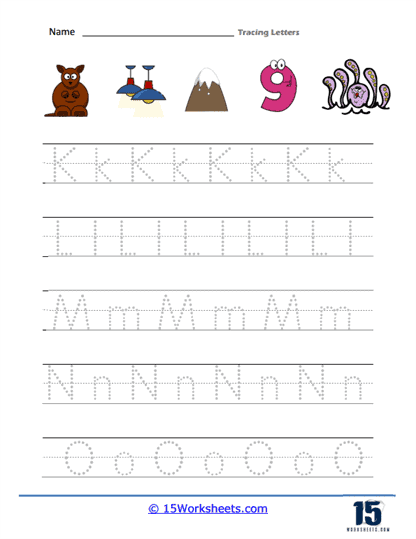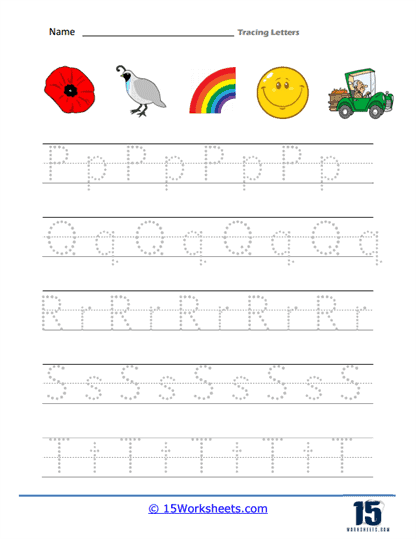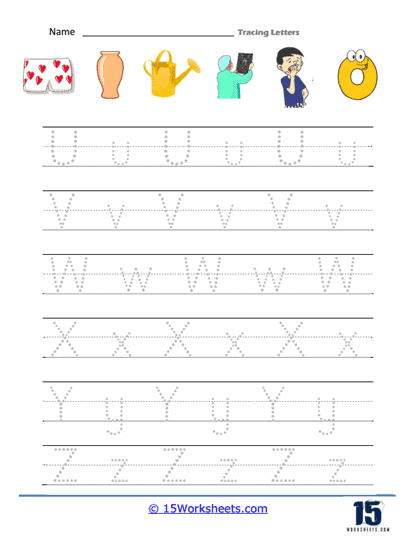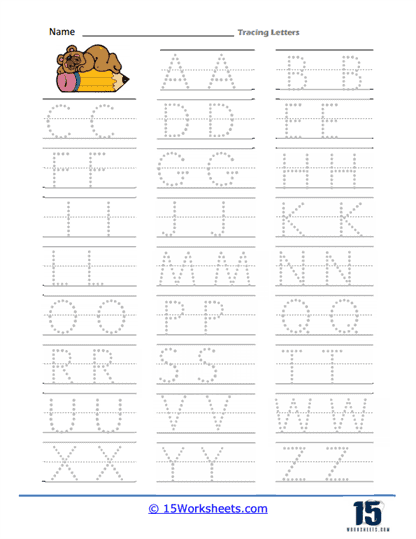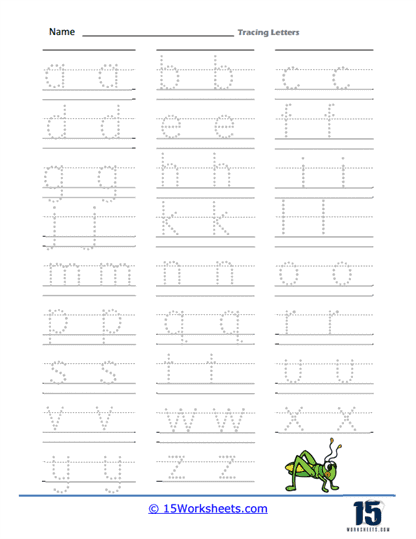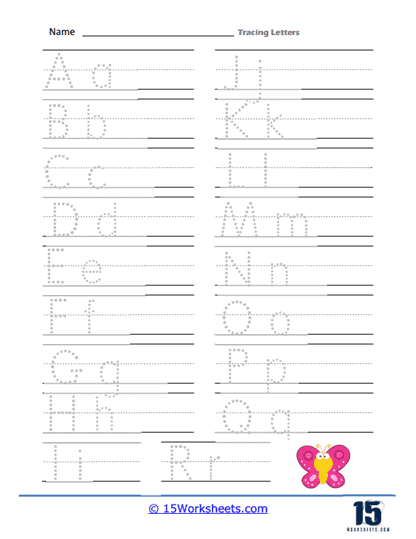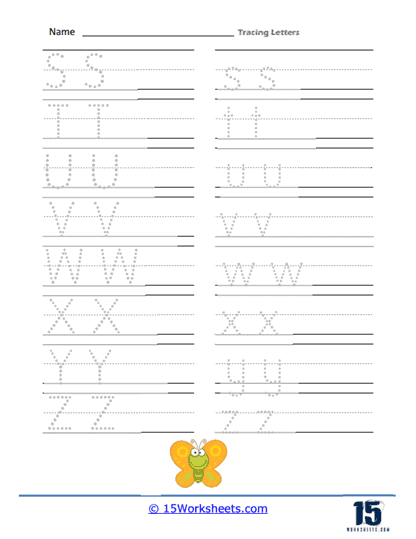Letter Tracing Worksheets
Why Does Tracing Letters Helps Improve Your Handwriting?
When we started writing, most of us did so by tracing letters and numbers onto papers or whiteboards. Even though tracing is not the only way to start introducing kids to writing, it certainly is effective.
Tracing and good handwriting go hand in hand. The more your kid will trace the exact shape and direction of alphabets and words, the better they’ll get at improving their handwriting.
Why is Tracing Beneficial for Kids?
Tracing might seem like only copying lines, letters, or numbers, but it has a lot of advantages and is a fun way to learn and improve handwriting for kids. Here’s how tracing helps 2- to 3-year-olds with handwriting.
– Develops fine- and gross-motor skills and introduce the kid to their dominant hand.
– Develops the ability to grip and maneuver writing tools.
– Develops hand-eye coordination for focusing and writing at the specified place.
Fine Motor Skills
Tracing is an excellent way to enhance fine motor control. When they just start grasping the pencil, kids lack the fine motor strength and control required to control the pincer grip and wrist movement to write and draw.
Tracing on the lines and dots furthers the development of strength and coordination between the wrist, hands, and fingers. The more time spent practicing, the easier it becomes to hold and move the pencil and control its movements.
If you have a child facing difficulty tracing letters and shapes, help them develop their fine motor skills first. Grabbing a small ball and moving it about, picking, holding, and dropping a toy, and threading beads into a shoelace are some of the activities that help improve fine motor skills. Once the child has mastered these tasks, they get ready to grab that pencil or crayon and start tracing.
Gross Motor
In handwriting, gross motor skills mean correct posture required for writing. Being able to control the muscles in the torso, arms, and legs is necessary to maintain stability for the fingers and hands to move to complete the handwriting task. Using the hands to make exaggerated movements for air tracing letters and numbers, tracing the letters in salt or flour trays, and other activities promote gross-motor skills, enabling the child to have good handwriting.
Pre-Writing Skills
Straight, slanted, curved, zig-zagged, forward, and backward lines teach the basics of writing the actual alphabet. When a kid moves their pencil on these lines, their writing and drawing skills get more refined, and they develop the necessary coordination and muscles required for handwriting.
Coloring Skills
Tracing helps children follow lines and stay on a specified path. This improves their coloring skills.
Why Tracing Letters is a Good Idea
Before a child can be handed a pencil and asked to write the alphabet A, parents and teachers spend days and weeks helping them trace straight and curved lines. Tracing letters is a prerequisite to free handwriting.
Tracing letters might not be the only way to introduce kids to writing alphabets, but it is one of the most effective. If you want your child to have good handwriting, tracing letters should be one of your most practiced activities in class and at home. The more practice your child gets, moving their pencil in the right direction, the better they’ll get at tracing and writing letters.
Why is Tracing Letters a Good Idea for Preschoolers?
Even though tracing itself seems like a strange concept. Moving the pencil on dots to create lines, alphabets, and numbers does not seem as beneficial as it is made out to be, but research has shown that tracing truly deserves the attention it gets.
The following ways are how tracing letters help young students:
- Helps develop and improve fine-motor skills
- Essential for creating and enhancing gross-motor skills
- Introduces the concept of the dominant hand
- Helps in gripping and maneuvering hand-held tools.
- Improves hand-eye coordination
- Lays the groundwork for focusing
- Vital to move the pencil and writing to the required place.
How to Help the Kids Trace
Use these tips to make tracing easy for the kids.
The Correct Hold
Use a medium-sized pencil for an easier grip. The more your kids practice holding the pencil and finding the position that works for them, the easier it will get to trace the letters.
Use a Blank Paper
Give the students a blank canvas instead of lined paper. When starting, they don’t need limitations set by a lined paper. Let them roam around and move their pencil in all directions to notice how much pressure is too much pressure and what happens when they move their pencil in a certain way.
Begin Tracing
Now that your students know how to hold a pencil, help them trace straight lines. Move on to the curved lines and then shapes. Once they have learned how to move the pencil while tracing a dotted line, move on to the letters of the alphabet. Hold the pencil with them as they attempt to trace the letters and guide them about the correct direction of the pencil’s movement.
Tracing and Fine Motor Skills
Fine motor skills are primarily dependent on pincer control. Gripping a pencil and using it to trace letters helps develop and enhance fine motor control. When the students are just beginning to hold the pencil, their hands lack the necessary control to control the movement of the tool, and determined practice enables them to improve that skill.
For children who struggle with tracing, the best way to improve their fine motor skills is to help them practice these skills through other activities. Threading a shoelace with medium-sized beads and picking up and sorting small-sized objects are the most practiced activities.
Tracing and Gross Motor Skills
Writing requires the child to sit in a correct posture. Once the child can control their arms, legs, and torso muscles, they can easily sit and attempt tracing and writing tasks. To practice these gross motor skills, play games that involve ‘writing’ in the air, making exaggerated movements while dancing, and jumping at one spot.
Tracing and Actual Writing
Tracing on straight, curved, zigzagged, and diagonal lines are the precursor to writing alphabets. As long as the child has plenty of practice moving the pencil on pre-drawn lines, they will be able to refine their writing skills.

